In a few words you can describe Romania as a land full of paradoxical and surprising experiences. I think I got your interest.
Romania’s diverse natural landscape offers a wide range of outdoor activities. Tourists may travel through imperturbable alpine meadows covered by wildflowers, be charmed by glacial lakes, take in the lush, green view while horse riding or mountain hiking. They also may climb astonishing rock formations, photograph and study a whole universe of endemic species of plants and animals, track one of the rarest birds – the Gold Eagle or go to the seaside or visit a wonderful and unique delta.
In order to reach Romania, daily flights from the United Arab Emirates to Romania are the fastest way. The tickets are pretty cheap: around 250-300 EUR roundtrip in spring and 400 EUR in autumn and winter. You can arrive in Bucharest – the capital of Romania and from there depart to the mountains or seaside as you prefer.
The Carpathians end their massive arc in Romania. Because the country has 53% of them, Romania is called the “Mountain Paradise”. Also, the country has the highest concentration of brown bears, wolves and lynxes in Europe; it has the largest amount of virgin forests in Europe (excluding Russia), and over one-third of Europe’s thermal and mineral waters.
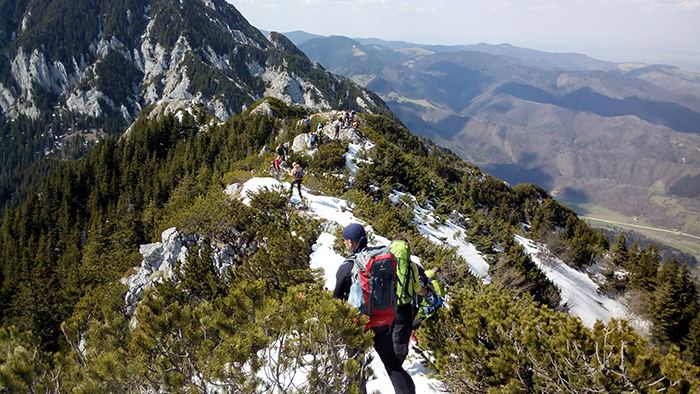
As we still have a four season climate, mountaineering finds its place both on summers and winters.
Winters come with large snow covers in the Carpathians making mountaineering a great adventure of limit testing and physical and psychological endurance. Summers offer other types of views and more adorable colours. But spring and autumn are not excluded for any type of activity, yet they are a bit rainy. These are the best seasons to try rafting.
Some of the most significant destinations in Romania for hiking and climbing are the Bucegi Mountains, Piatra Craiului National Park, Făgăraș Mountains, Apuseni Mountains (in the west of Romania). For now, for the sake of a more detailed image, we will deal with only two mountain ranges.
If you want to have an easy, pleasurable hike then the Bucegi Mountains is one of the best destinations. This mountain range has charming rock shapes (megaliths) that made the place famous: Babele (2,206m) and Sphinx (2,216m). The two rock formations that generated lots of legends and paranormal stories that challenged a lot of mountain lovers to take their paths. Nearby Babele you may find accommodation at Babele Hut. It has 108 beds, a restaurant and other facilities. Price per bed is only between 7-15 euros.
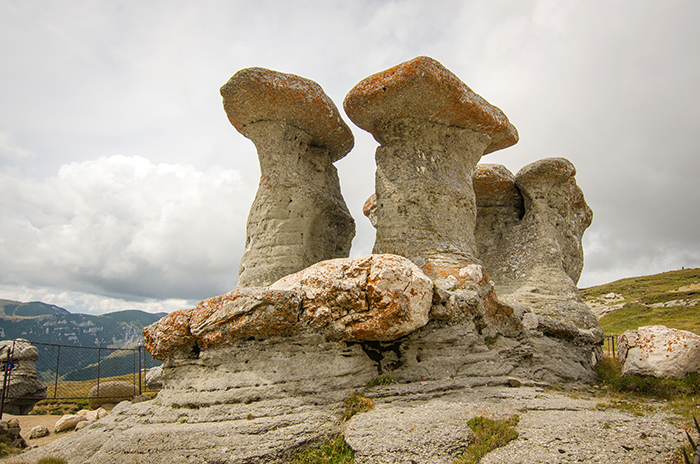
The medium running time of a trail towards Babele or Sphinx is 4-5 hours, but you may climb by the aerial tramway as well.
Another impressive peak of the Bucegi Mountains is Omu Peak (2,507m). It is the highest from this range and the 11th from Romania. The massive peak offers accommodation as you may find Omu Hut near a meteorological station. The hut has 30 beds and a restaurant. There is no water source or energy supply. Accommodation price is about six to seven euros/bed in rooms with 4-12 beds. Any trail from mountain villages to this hut has a medium running time of seven hours.
Bucegi Mountains offer a wide range of rock climbing tracks, but some of them have no trail marking, which makes them dangerous for those who do not know the area. One of the most spectacular rock climbing trails is then Acele Morarului. Aside from the hiking part of the mountain, there are 3-4 hours of pure mountaineering. So, you should have proper mountaineering gear.
The best advice is to be guided by a local organization or person that knows the trails and the language, despite the fact that Romanians speak English well.
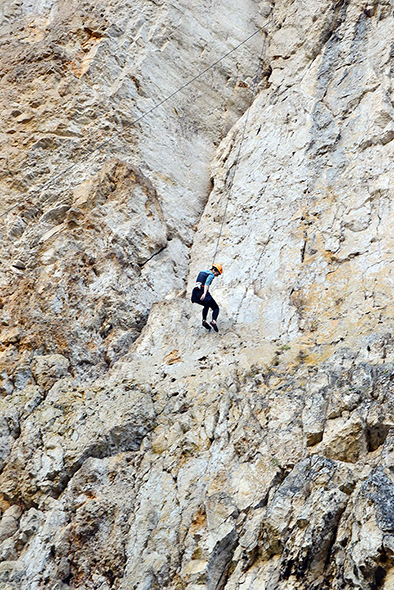
The second recommended destination is the Piatra Craiului National Park. It is the most important national park in Romania due to its endemic species of plants and animals. Furthermore, there are some villages (Peștera and Măgura) that preserve some of the oldest Romanian customs. They are the only Romanian villages included in a national park. The traveller may have a relaxing walk through these villages and observe Romanian customs, eat Romanian traditional dishes and enjoy the picturesque landscapes.
At the same time, the Piatra Craiului mountains may generate a good deal of adrenaline. And if you are an adrenaline seeker, then this is the place. The main attraction is the limestone ridge oriented from northeast to southwest. It reaches the maximum height at La Om Peak (2,238 m). It is the longest and the tallest limestone ridge in Romania. Climbing the peaks on this ridge means physical endurance for hiking and good mountaineering knowledge. Not to mention that with no adequate equipment, the trails turn into fatal dangers, especially during winter. On this ridge, one finds accommodation at Curmătura Hut. It has 44 beds, a restaurant, water source, energy supply and an astonishing view. Price per bed is between 7-12 euros depending on the number of beds in one room.
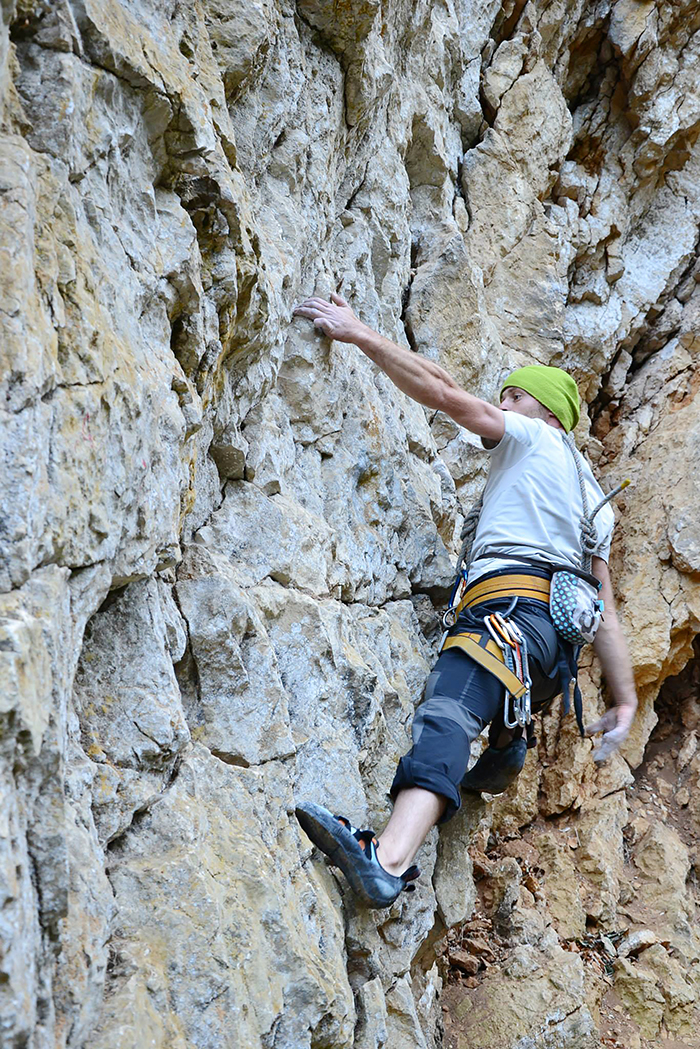
If one goes on the trail towards La Om Peak from Curmătura Hut in order to complete the whole ridge and reach the hut again, they have to take a 10-12 hours hiking trail. The trail may be done in two days, but, in this case, you have to be prepared to camp at a shelter bringing winter sleeping bags and jackets. For a complete adventure, Piatra Craiului offers a lot of places for rock climbing. Zărnești Gorges is the kingdom of rocks, with trails of different difficulties. Mountaineering lovers are seduced by them as sailors were lured by sirens.
For a usual hiking trail to be safe, one has to bring the mandatory equipment: technical boots, technical waterproof long trousers, technical T-shirts, rucksack, technical waterproof jacket, hat, one litre water container, whistle, compass and first-aid kit. For trails that combine hiking and climbing or just for rock climbing, the equipment has to include ropes and cords, fall-arrest devices, ice axes, pulleys, ice pitons, ice crampons, mountain helmets, harnesses, slings and anchors.
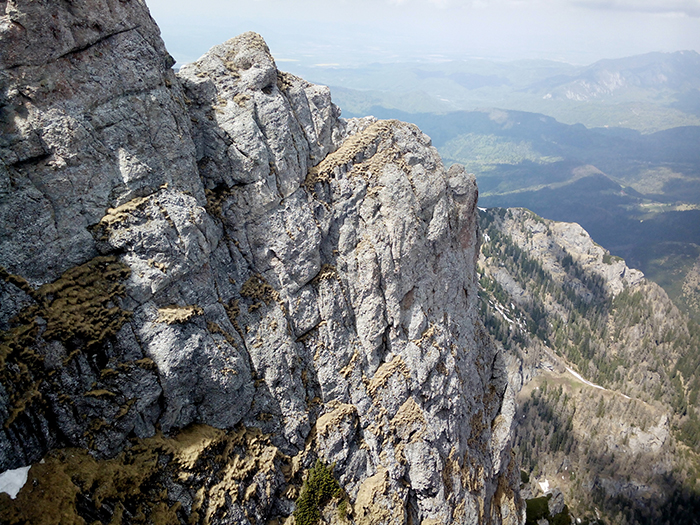
Weather on Romanian mountains at high altitudes may turn into a real enemy for those who are not well-equipped. On autumns and winters, fog and wind are the most threatening weather phenomena. Wind produces massive body cooling and, combined with snow or fog that limits the visibility, may put life in danger. At high altitudes, wind may reach sizeable speeds. Also, when one goes on the trail on sunny days, snow starts melting and it radically increases the risk of avalanche. On springs, autumns and summers, precipitations may endanger rock climbing activities as the rocks are wet. Otherwise, these seasons are recommended for a higher safety of outdoor activities.
It is well-known that the prolonged physical effort presupposes a high consumption of fats, sugars and nutritive substances. That is why food carried by mountain lovers should have a small volume, be unalterable and easily assimilable: chocolate, different types of nuts, fresh/dried vegetables and fruits that you know that you tolerate well and do not produce gastric discomfort. Fruits also help for hydration and because we mentioned it, the water container should not be forgotten, it is a mandatory item on mountains, especially on trails that do not have water sources.
Words By: Ileana Buzoianu of the Oxygen Association

